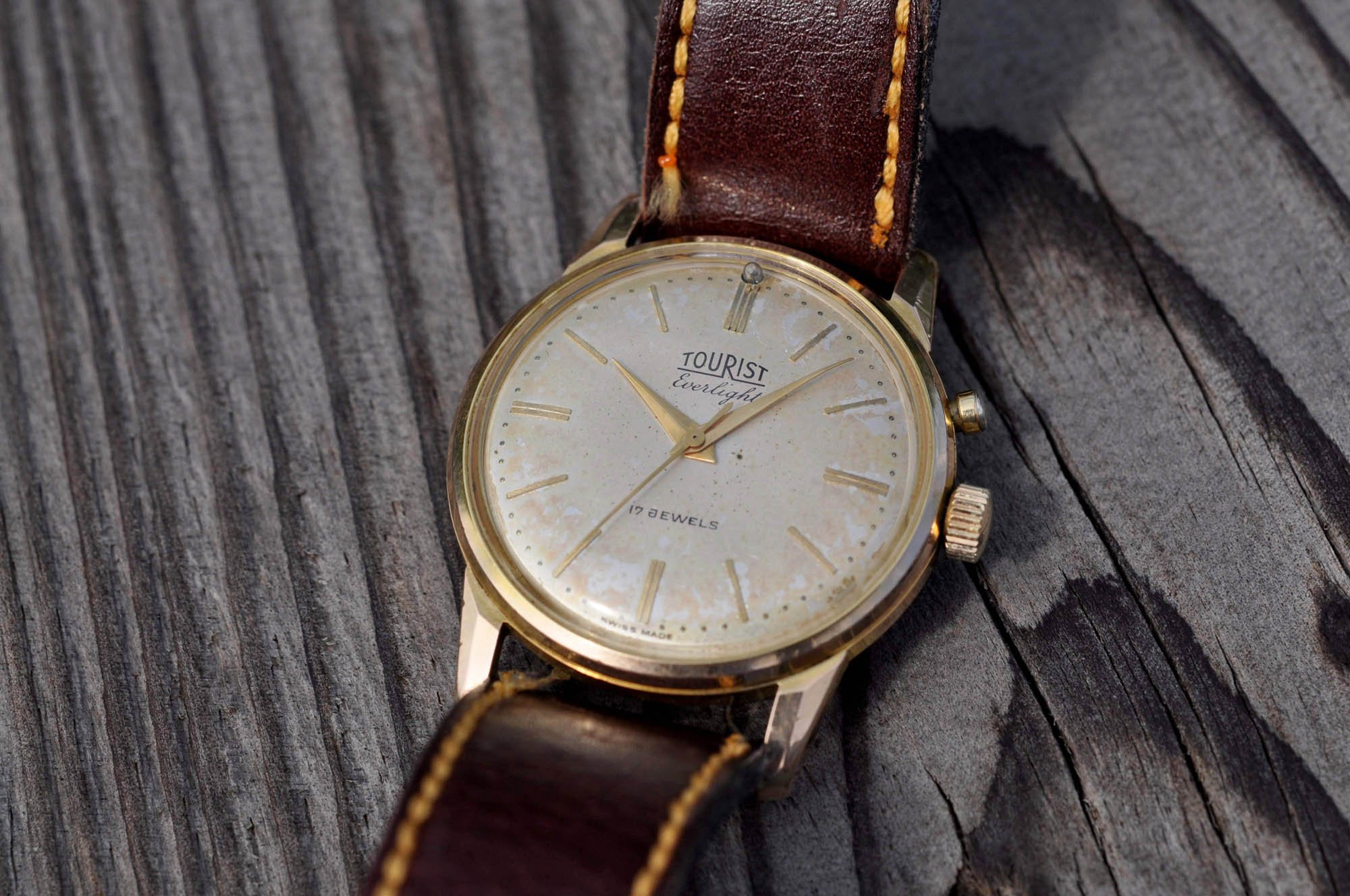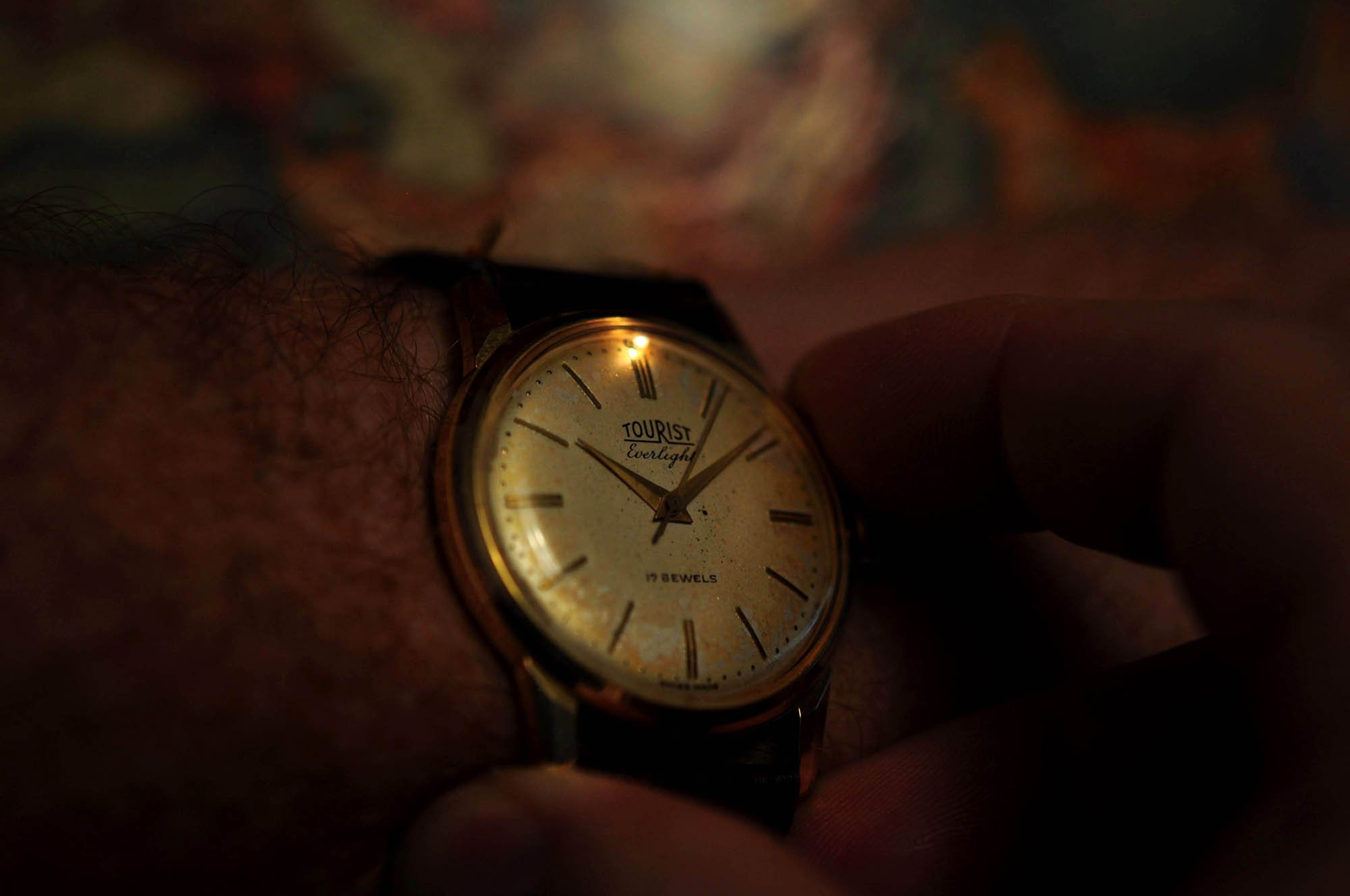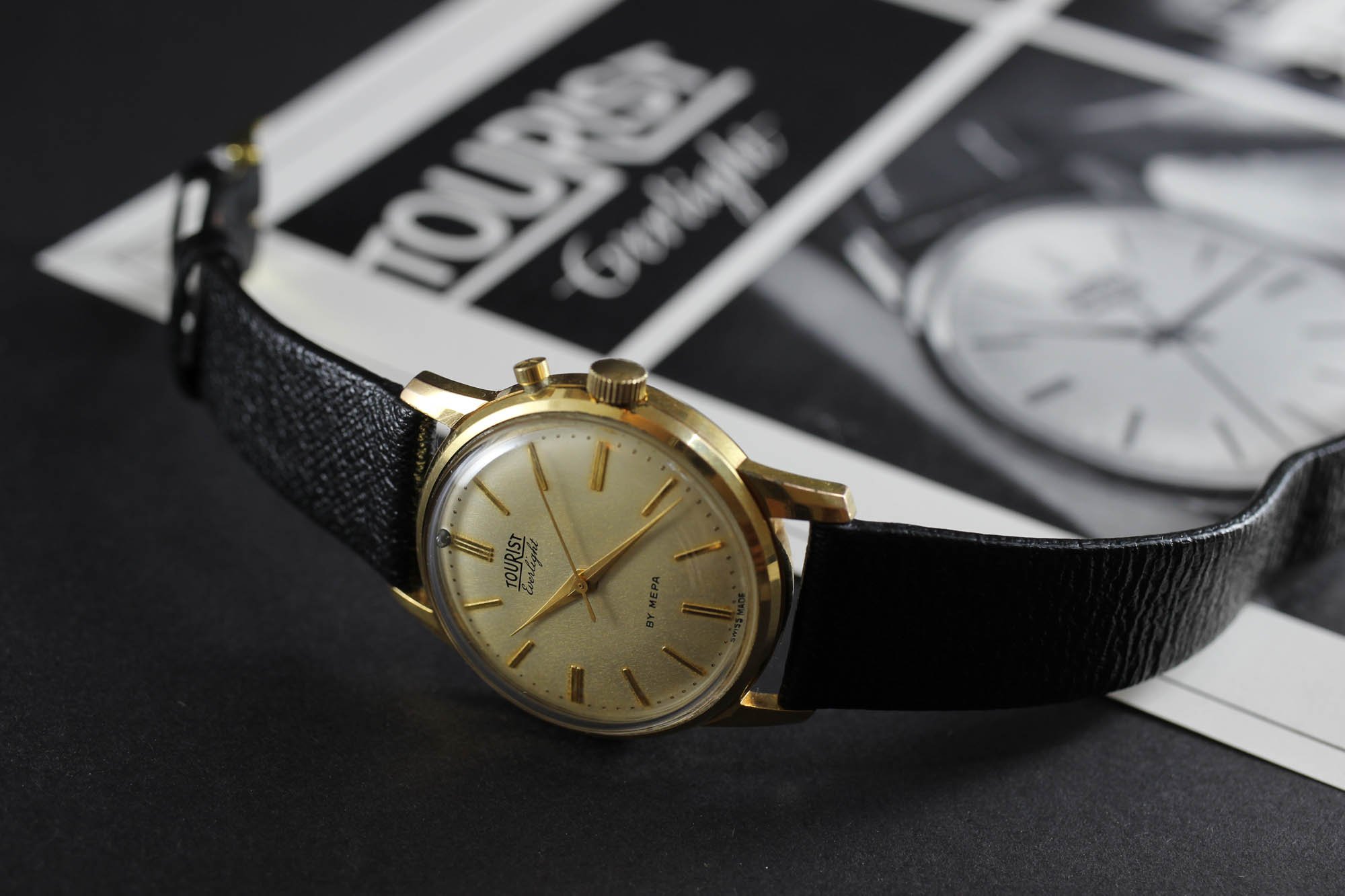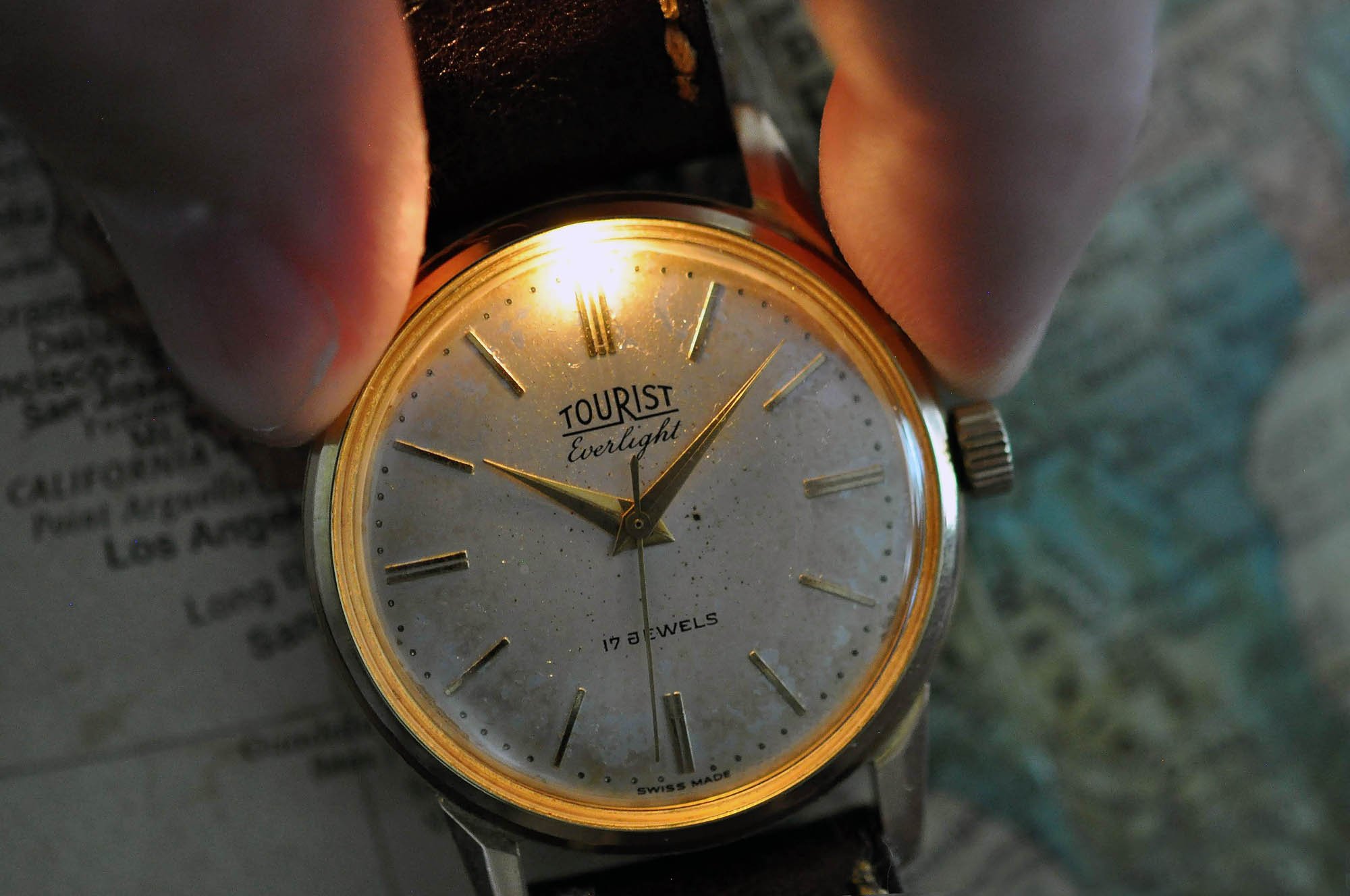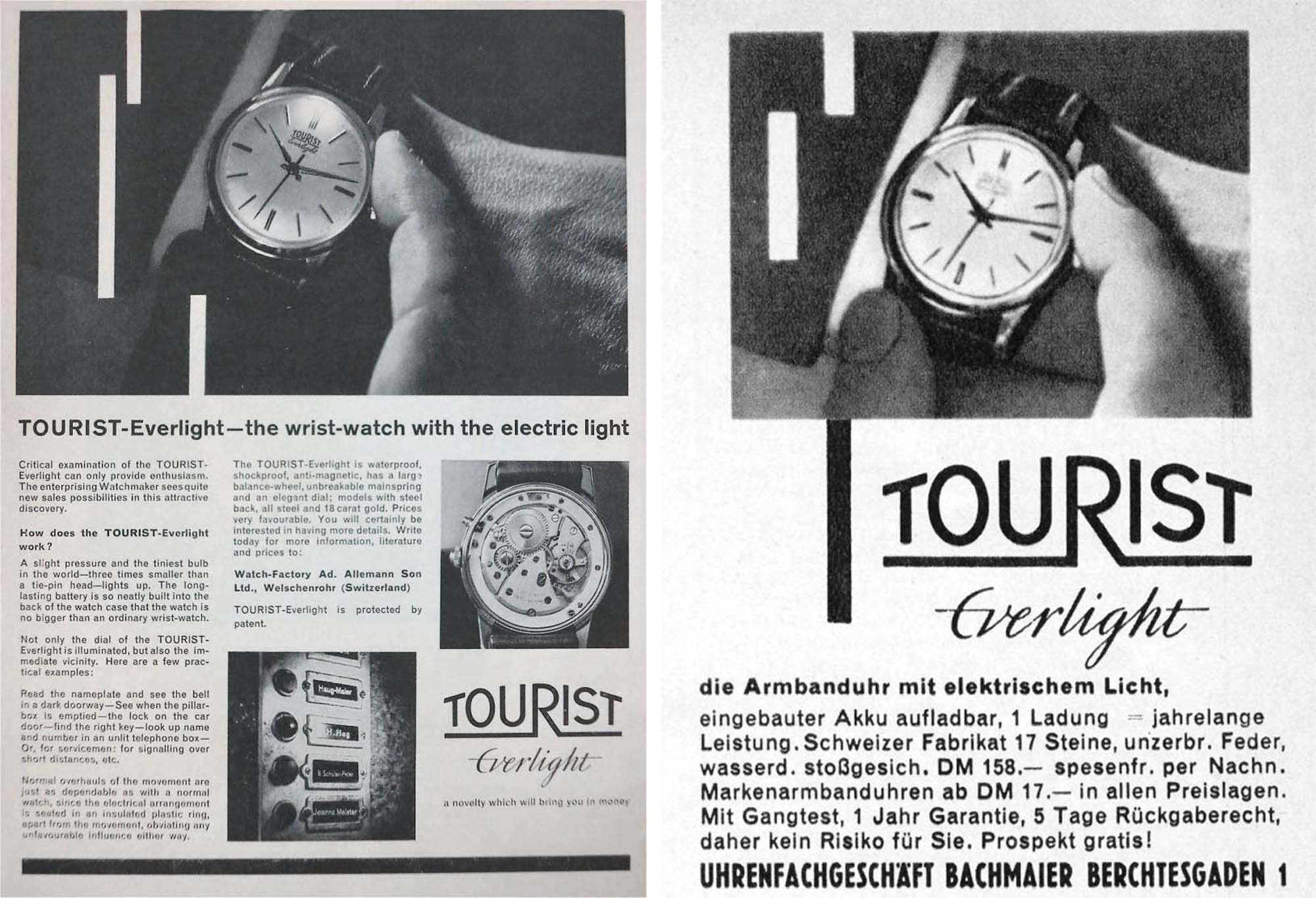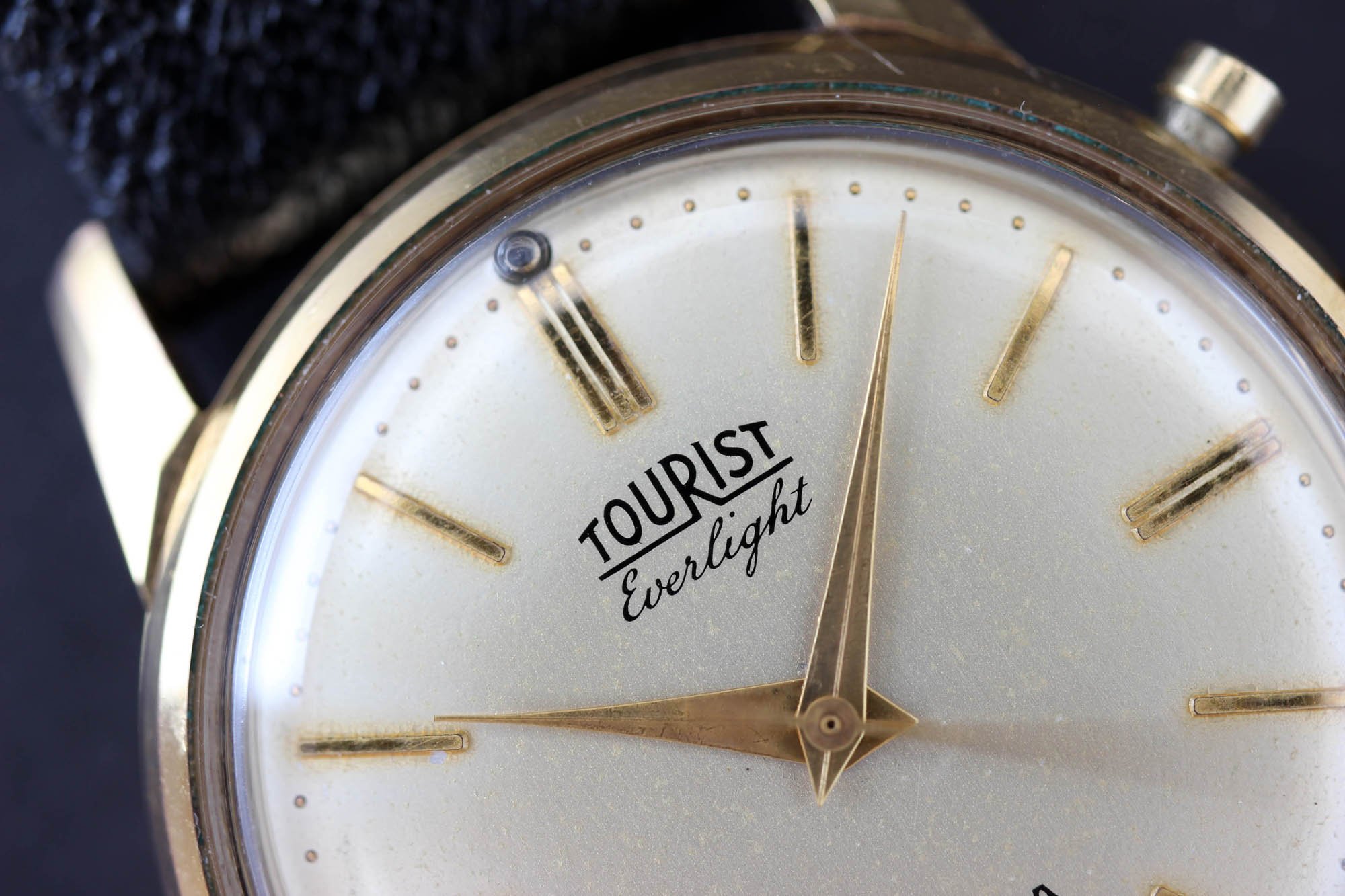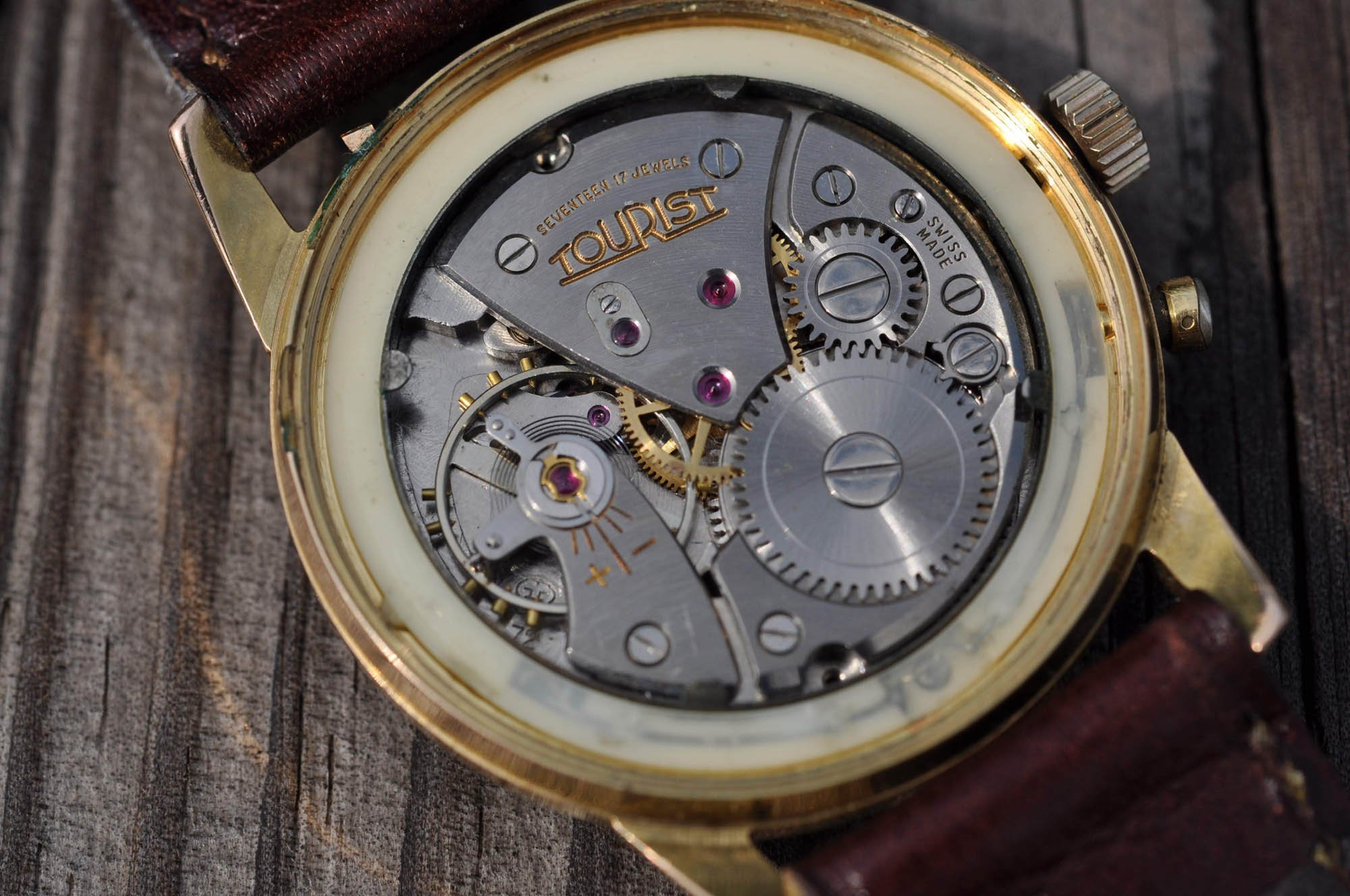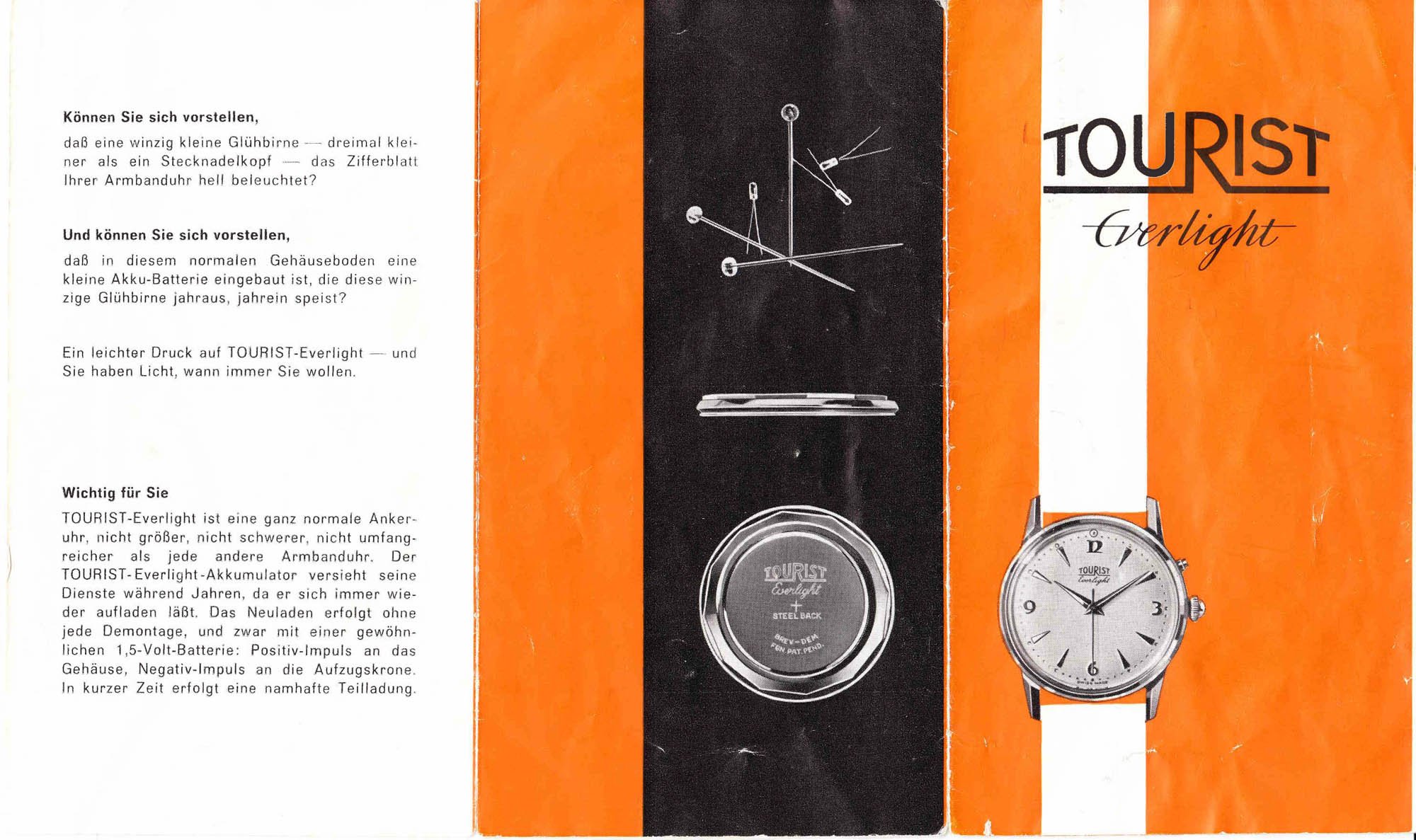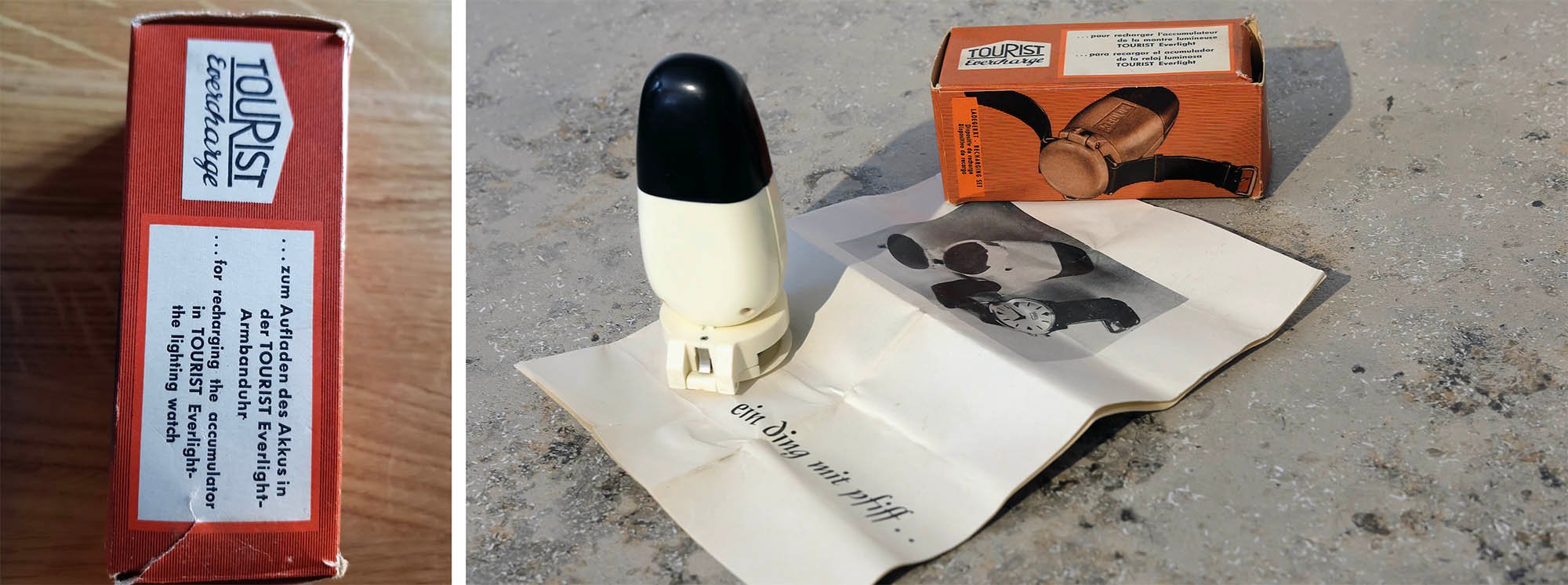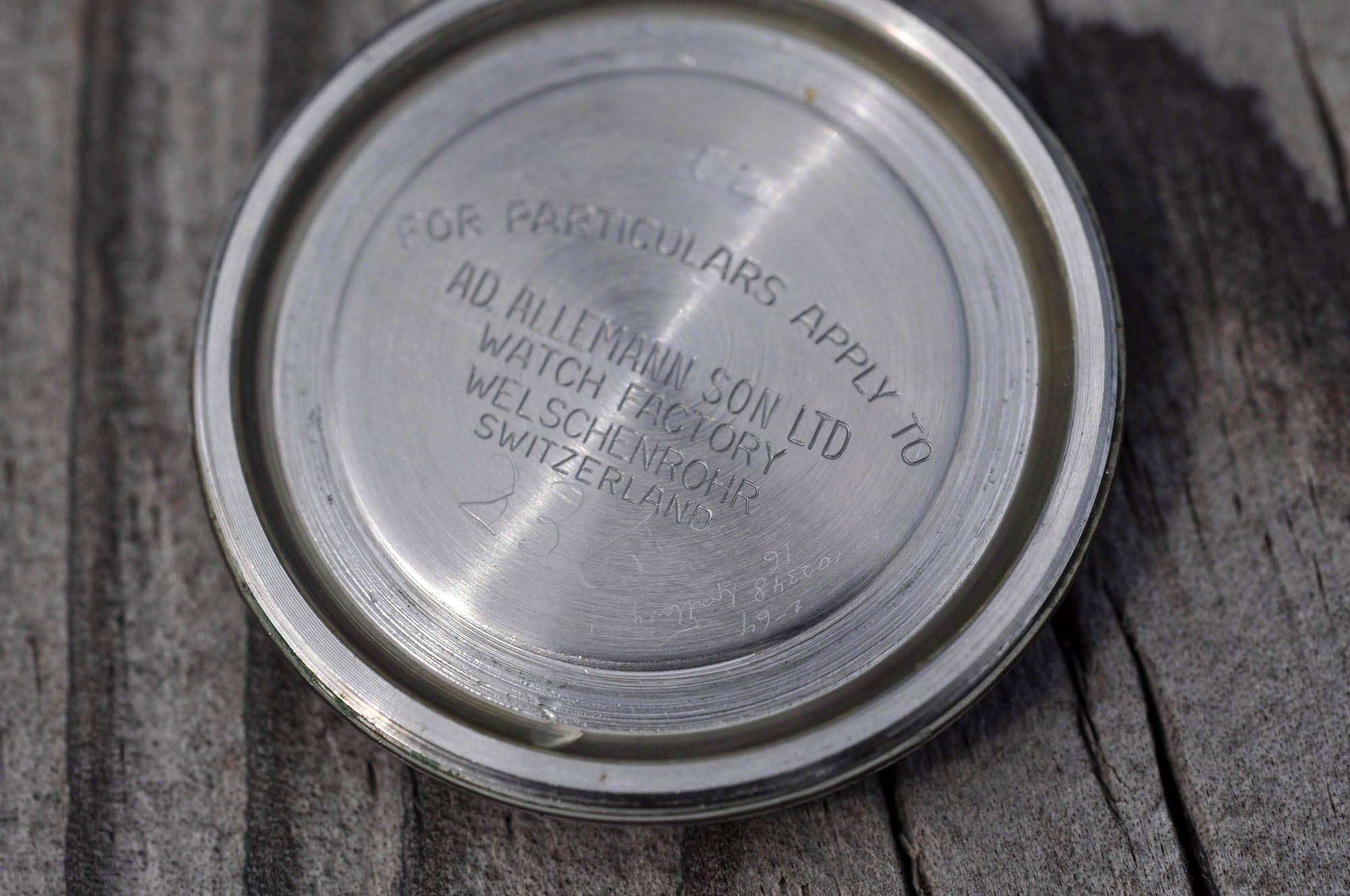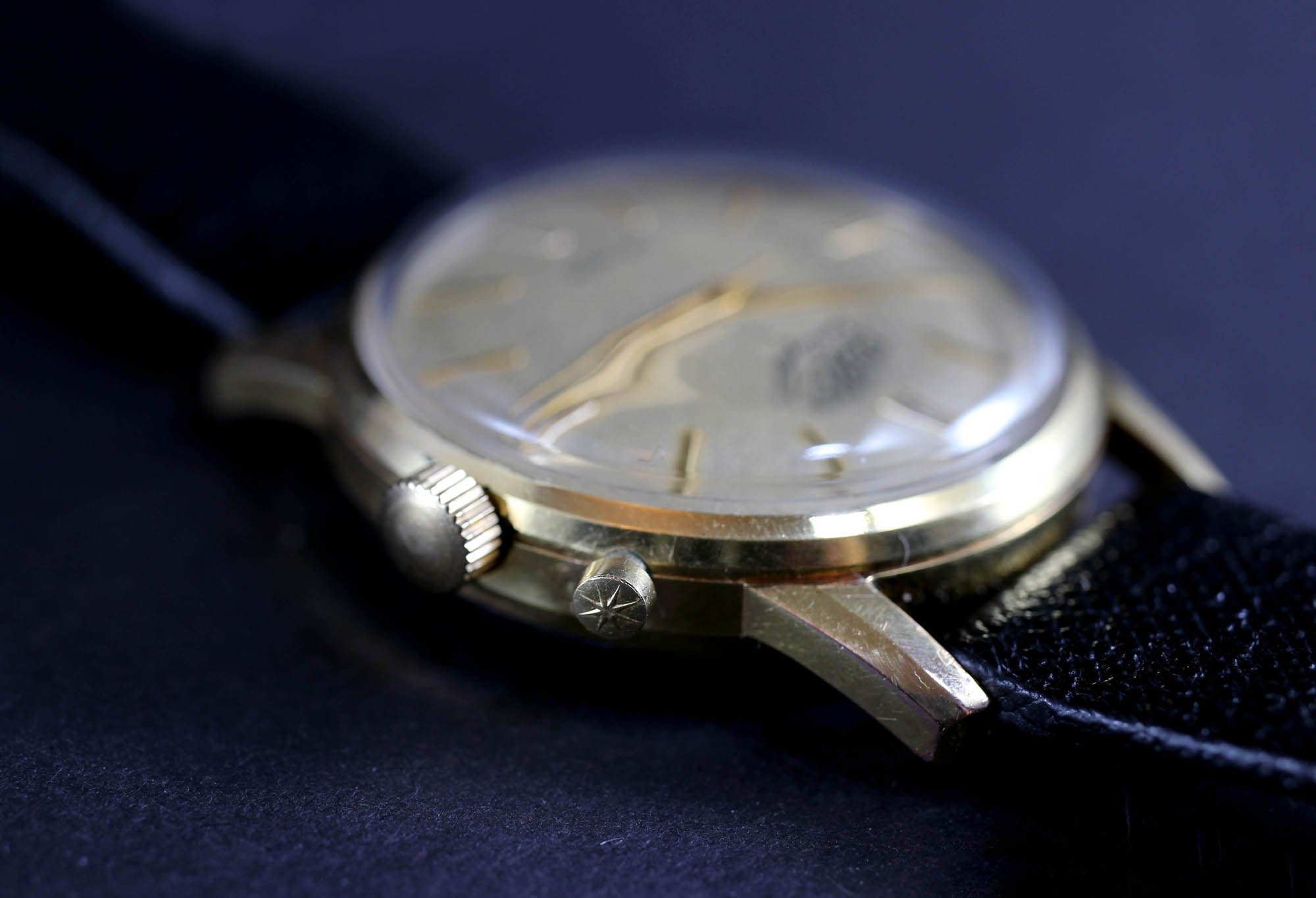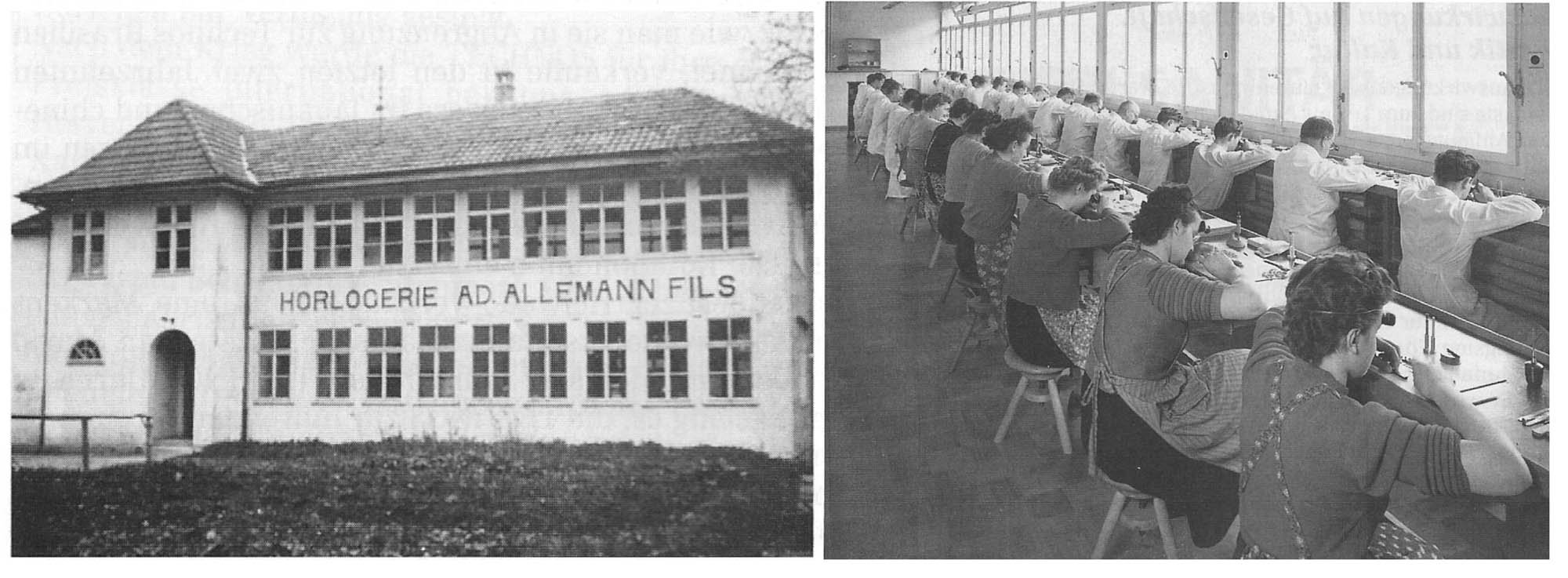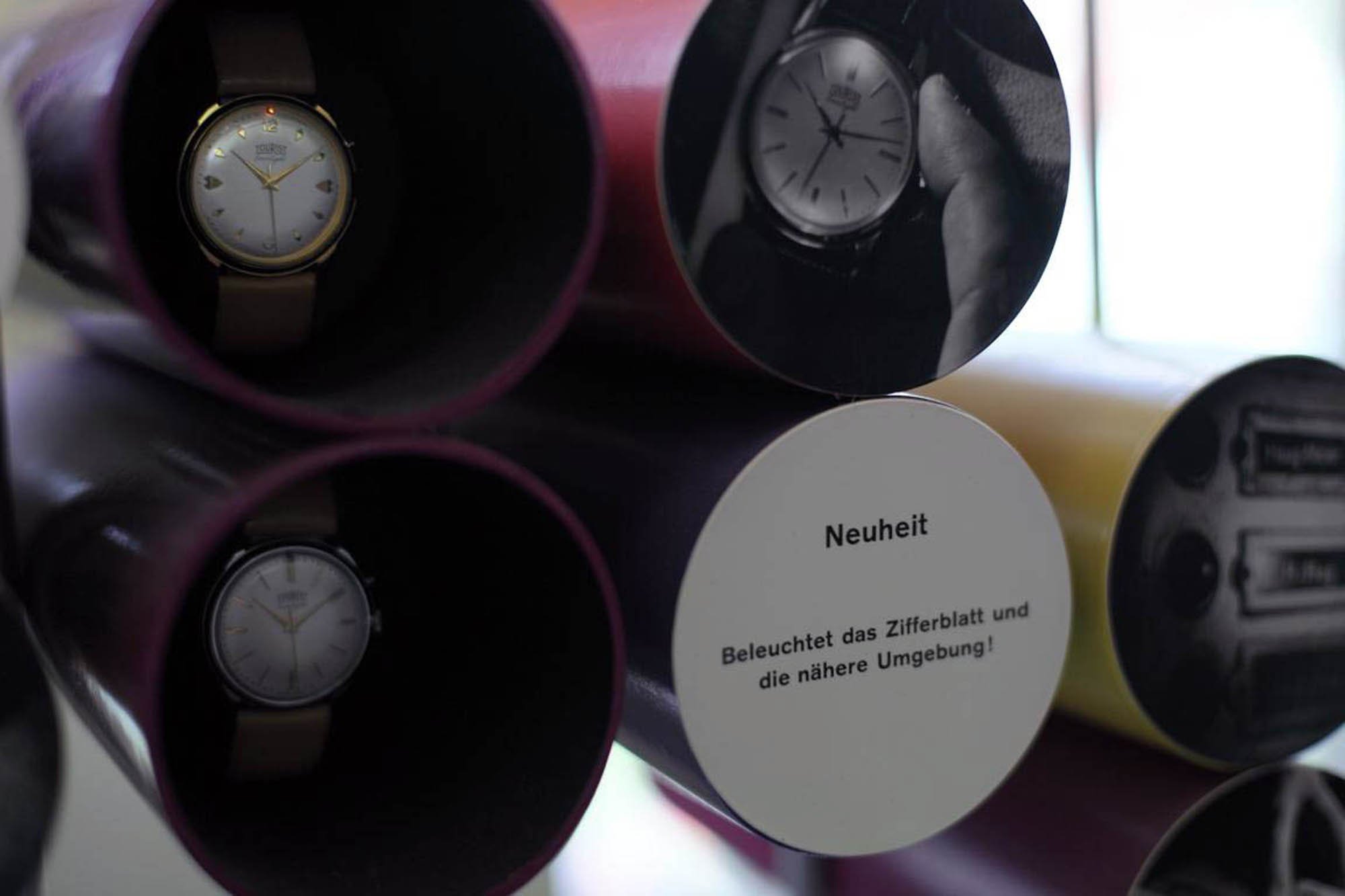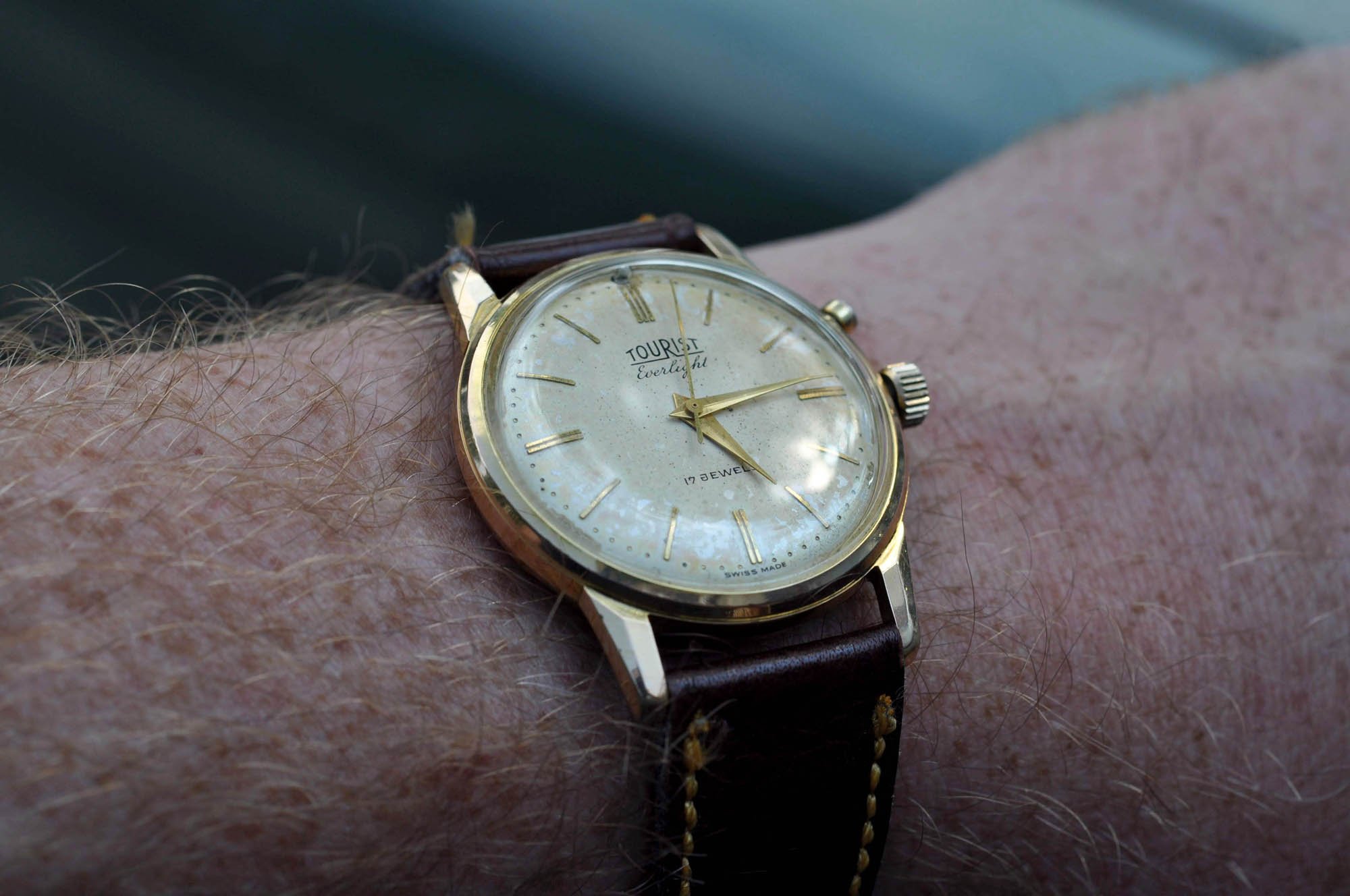#TBT Tourist Everlight Part #1: Origins
The tender to become NASA’s chronograph for astronauts wasn’t the only breath-taking watch race in history. The underrated and often overlooked Swiss brand Tourist was the first brand to market a mechanical watch with a light function.
No need to rub your eyes twice, you read that correctly. Forget about the 1980’s backlit displays. Imagine we are in 1956, and somebody dreams about a mechanical watch with a little light bulb to be activated when you want to read the time at night. You would need a battery, right? The battery, a small lead DEAC dry accumulator, was built into the case back. After I learned about this smart solution, I immediately dug into the research and hunt. Here is the first part of my story on the Tourist Everlight that has turned out to be my most amusing and satisfying watch hunt this year.
During my research, I spoke to and contacted more people than on any previous article on #TBT
All Tourist Everlight watches are illuminated by a small 1.2mm bulb sticking through a tiny hole above the 12.
The Tourist Everlight
It will be challenging to keep this article under the typical five-minute-long read. Hunting down the Tourist Everlight and making it light up for the first time took me longer than restoring or servicing any other vintage watch that went through my hands. During my research, I spoke to and contacted more people than on any previous article on #TBT. There was only very fragmented information available on the Everlight. Any seemingly reliable information was diluted into random invisible lines on watch-forums and posts. However, I ended up having multiple discussions with Everlight owners, watchmakers, random strangers that happened to share a picture of their watch, and with René, the grand-son of Tourist founder Mr. Adolf Allemann.
Part #1: Development of the Tourist Everlight
As I collected a lot of material on the Everlight, we decided to divide the findings into two parts. This week, we will focus on the poetic half of the story – the origins, developments, and people behind the Tourist Everlight. Next week we will share with you what it took to light up my particular piece.
Making friends through the Tourist
I stumbled upon the Tourist Everlight when researching another jumping second Tourist Radio-Top that we have already featured on #TBT. I stumbled upon it in a blog post written by British photographer Tom Waugh, who has been living in Switzerland for two decades. He once attended a photo exhibition that was held on the premises of a former watchmaking factory in Welschenrohr. Lucky for us, he was as attracted to the watches in the background as to the actual exhibition. Tom was happy enough to meet and speak to Mr. Alois Zäch, who was an electrical engineer at the Tourist’s sister company called BRUWA. Tourist hired the company for it the development of the watch, and Mr. Alois Zäch was the technical and design lead on the movement holder that integrated the circuit for the dial lighting.
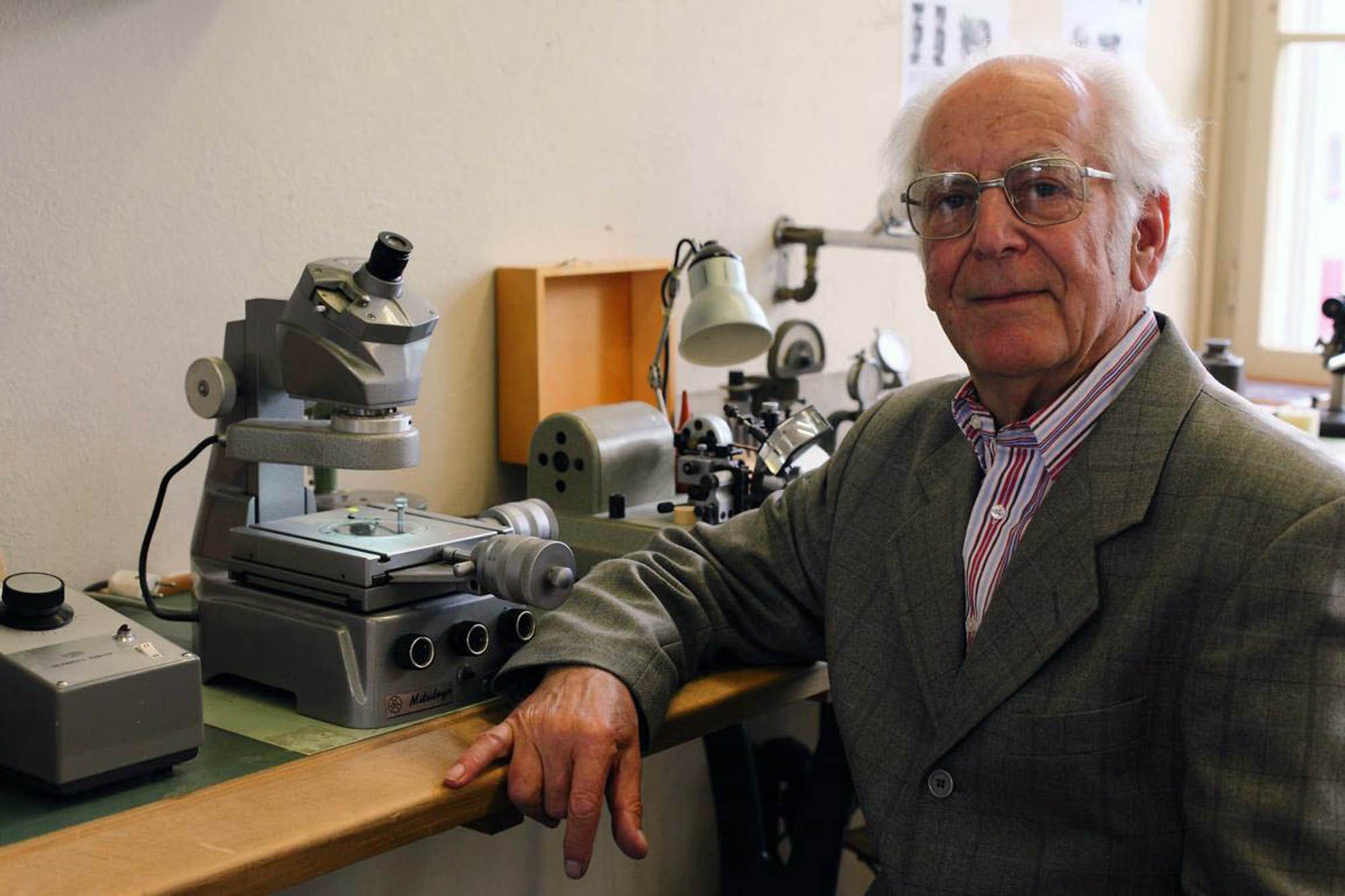
Unfortunately, Mr. Zäch, who designed the movement holder that integrated the circuit for the dial lighting, passed away recently. Image source: Tom Waugh
Needs lead to ideas
I contacted Tom, and he sent me all the pictures he shot that day and patiently responded to all of my questions, even though he is not a watch nerd like the rest of us. He was also so kind as to offer to revisit the Uhrundzeit museum and try to get more information. “Radium was banned because of radioactive radiation from about 1955. The company Tourist found itself not being able to read the time during the night. That’s how the idea of developing the world’s first electric lighting in a mechanical wristwatch came around,” says Andreas Fluri. Fluri is a local watchmaker that Tom re-connected me with. He has his own workshop and volunteers as a curator of the watch museum in Welschenrohr.
I really would like to know where all 100.000 Everlight pieces are.
Drama starts
As it usually happens, Mr. Allemann was not alone in the dark. Historical records on electric lighting development also cite Ernst Borel, who filed a patent application for the use of electronic watches on September 28th1956, under no. 336764, according to Pieter Doensen’s book History of a Modern Wristwatch. Andreas Fluri claims that Tourist applied for a patent a bit earlier than that, on April 30th. Regardless of whose patent was first, it was Ad. Allemann Fils that first premiered three Tourist Everlight watch models at the 1957 Basel Fair. Ernst Borel showed his Flash watch a year later in 1958.
Everlight dials
Most Tourist Everlight watches come with a typical dial design with long straight single indexes for regular hours, double indexes for 3, 6, and 9 and a triple index for the 12. Some models feature Arabic numerals. Regardless, both variations immediately fall into the yawning category. You need to know the backstory to bother paying attention to the seemingly random Tourist watch. Thinking about how many Everlight watches you missed over the years? All Tourist Everlight watches are illuminated by a small 1.2mm bulb sticking through a tiny hole above the 12. And if you explore the pictures, you have to admit that the bulb installation is done in a very subtle and elegant manner.
Behind the scenes
As mentioned, Mr. Zäch was in charge of constructing the movement holder that integrated the circuit for the dial lighting. In the middle section, between the white plastic housing and the lighting circuit, there is a steel ring touching the bottom part of the case back. The classic screw-down case back is surprisingly thin and houses the battery. The battery comes in contact with the steel ring from the inside once being screwed down.
Recharging the Everlight
The battery was designed to provide reliable service for years before having to be recharged. Recharging was possible without any disassembly, using an ordinary 1.5-volt battery. It was enough to stick the positive impulse to the housing and negative impulse to the winding crown. A 1958 leaflet that was sent to me by Andreas Fluri promised a considerable partial load in the blink of an eye.
Special charger
Tourist also developed a special charger called the Tourist Evercharge, but it was not included in a standard watch set. The Evercharge had to be bought separately. Unfortunately, to this day, I haven’t managed to get one, but Tom and Andreas took a few pictures of the original charger kept in the Welschenrohr museum. It would be of no use anyway, as most of the batteries are long gone.
Surviving pieces
Not all batteries are gone, however. During my research, I made another watch friend, the Canadian Chris Allsop, who helped me revive my Tourist Everlight. Chris inherited his watch from his dad, who was born and raised in Yorkshire, England. He immigrated to Canada in the late 1950s. Before he left for Canada, he spent some time in Switzerland where he picked up the watch. Chris was extremely kind and made some extra pictures so that we could feature his Tourist Everlight watch in the article as well. Later on, Chris’s dad also owned an Omega Constellation from 1966.
One immediately starts thinking about the battery, right?
Canada makes progress
Chris remembers the moment when he first brought his father’s watch back to life: „I put together a prototype charger using parts from an electronics store. Since I wasn’t sure what the polarity was of the battery connections, I had to do some trial and error. I eventually figured out where the charge connections were and what their polarity was. I connected the battery, and after a few minutes of charge, I could see the light start to work!“.
Smaller pusher
Most Tourist Everlight cases are 35mm in diameter. Wearing the Everlight is a true delight for me despite the generic design. On the wrist, the watch feels bigger, more like a 36mm or 37mm. Thanks to the unique pusher at two, the watch has a special charm that immediately catapulted it to the top of my favorite golden watch chart. There were two different types of light activation pushers. A typical chronograph-like one, but smaller, and the other one is resembling a tiny button (as visible on an original leaflet provided from Andreas Fluri). The first type has a symbol of a blast or sparkle engraved on it. A tiny but lovely detail.
True Lightsaber Watch
Tom Waugh took a few fantastic shots during his 2012 visit at the museum, including ones of the special stand from the 1957 Basel exhibition, blueprints, and the original press release for the watch debut. The deeper I dug, the more convinced I am that Tourist has put a lot of faith into their novelty. They did not come out with only one model, but with three. The Tourist Everlight came in steel, gold-plated, and an 18-carat gold version, A chromed and a 14-carat gold versions were added later.
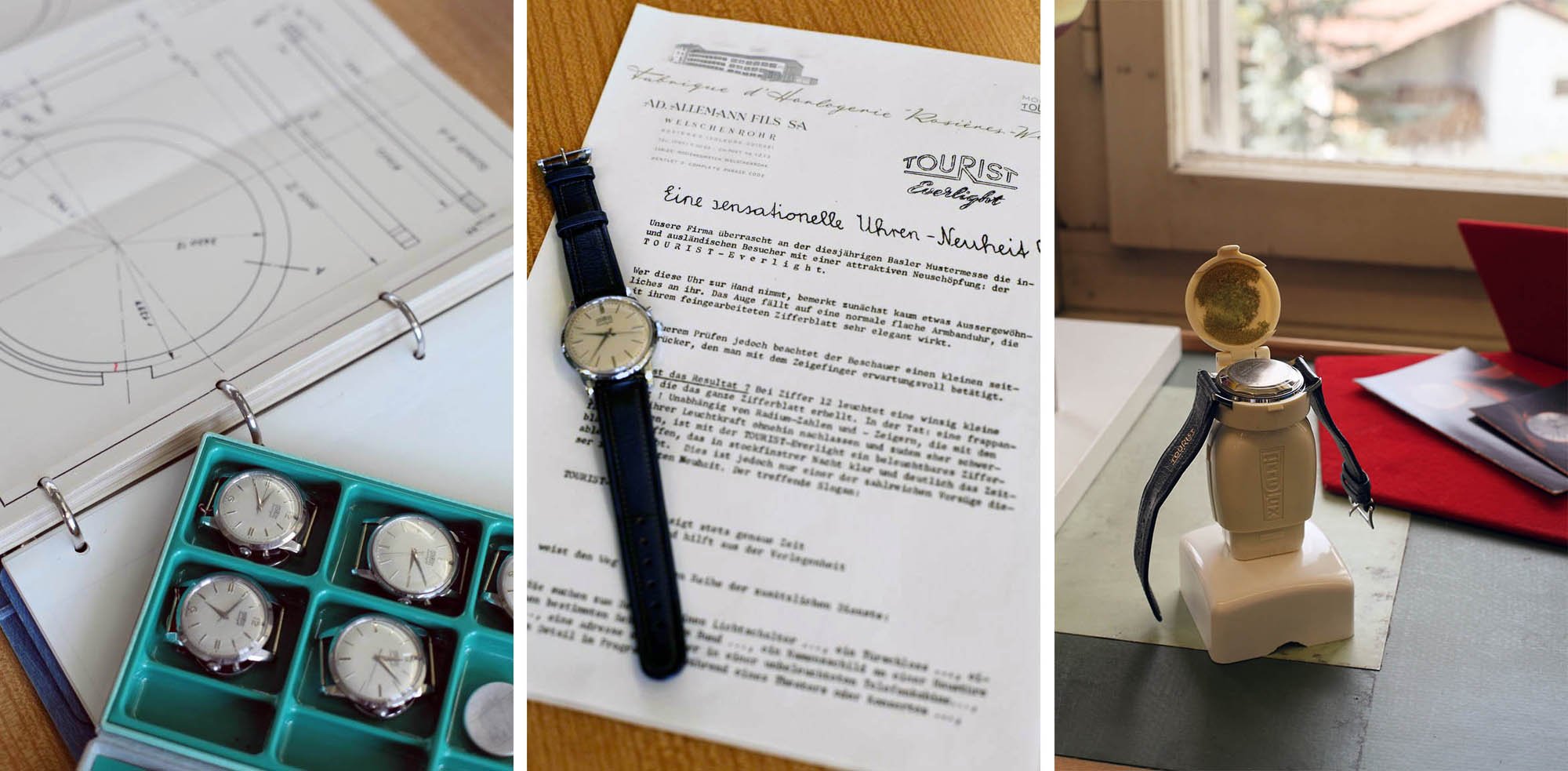
Tom Waugh made a series of shots from the museum, including original watch blueprints, press releases and original charger.
Market response
The official sale of Tourist Everlight began in the summer of 1957 after the fair. “We don’t know the specific numbers, but according to estimates, Tourist produced well over 100,000 pieces,” says Andreas Fluri. Unfortunately, many of the watch batteries suffered issues with batteries leaking, and a large chunk of the sold production was taken back due to warranty claims. The sad fact that the Tourist company closed down operations in 1963, just six years after Everlight launch, pretty much sums it up. Even more tragic when you realize that Allemann established the company in 1893.
Shotgun notes
I really would like to know where all 100.000 Everlight pieces went and how many there are still today. If you have one, please reach out! It is so difficult to find them. There was also an Everlight with a date aperture at 12 o’clock (under the marker), which makes the light even more playful. I need it as desperately as I need the steel case version. I also need to mention that later on, an automatic Everlight was introduced as well. Tourist also produced the Everlight for other brands. So don’t panic if you find a Sparewa Everlight, Waltham, or Giroxa Everlight. They probably feature two bulbs, one at the 12 with another at 6 o’clock.
Final thoughts
It might just be my childhood fascination for quartz watches with backlit displays. I know that the Tourist Everlight watch doesn’t have a prestigious movement, but for me, this watch embodies a creative mind, willingness to innovate, and determination to chase one’s dream. Hats off to Mr. Zäch and Mr. Alleman.
Next week we will continue this poetic story with more details on the movement, construction of the holder for the lighting circuit, and essential guides on how to bring Tourist Everlight to life.
A special thank-you goes to Tom Waugh, Chris Allsop, and Andreas Fluri.

